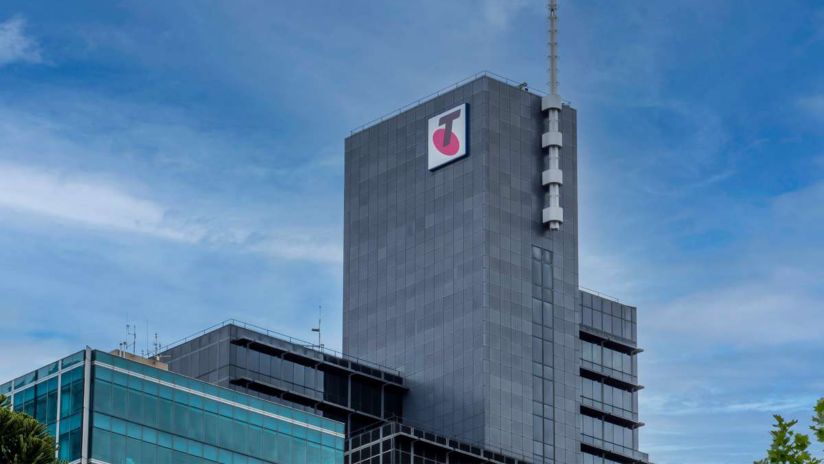Restructuring Telstra: our most significant change since privatisation

First let me outline today’s announcement.
We have announced the proposed restructuring of Telstra into three separate legal entities, under a parent company to be called Telstra Group. The three entities will be InfraCo Fixed, InfraCo Towers and a third entity – ServeCo. ServeCo is not a new brand name, we are just using it for the purpose of differentiating it from our infrastructure business because it is focussed on our products and services and customer support.
InfraCo Fixed will own and operate our passive physical infrastructure assets: the ducts, fibre, data centres, subsea cables and exchanges that underpin our fixed telecommunications network.
InfraCo Towers will own and operate our passive physical mobile tower assets, which we will look to monetise over time given the strong demand and compelling valuations for this type of high-quality infrastructure.
Finally, ServeCo will focus on how we create and innovate products and services for our customers and deliver the best possible customer experience, including maintaining our significant network leadership. ServeCo will also own the active parts of our network – things like software defined networking that allows us to operate in a dynamic way.
It’s important to understand that we are being very careful to hold onto key elements of our network in ServeCo – including the Radio Access Network equipment on our mobile towers, our spectrum holdings and the electronics that light up the fibre in our fixed network – these underpin our strategic advantage and differentiation. These are things we have built through decades of investment and innovation, that have made us, and will continue to make us, Australia’s leading telco.
What’s driving the change?
We spoke about the key drivers for the establishment of InfraCo when we launched our T22 strategy in June 2018. The challenges and disruptions of the last 6-12 months have reinforced these and three things in particular. Firstly, the increasing value of infrastructure assets globally; secondly, the importance of the digital economy, not only to business but to the whole of Australia and its economic recovery; and thirdly, the dependence of the digital economy on telecommunications as its platform.
Almost everything that happens today relies on telecommunications. If you think about every single Google search you do – that depends on the telco network. Every time you use an ATM or pay for something by EFTPOS – it depends on the telco network. Every time you book a taxi or order takeaway – it depends on the telco network. Every time you have logged onto work or school systems from home during COVID or have been part of a video call with colleagues, friends or family – it depends on the telco network. Telstra’s telecommunications network is not the only network in Australia but it is certainly the largest and the best and while it is largely invisible to most, it is absolutely central to our lives. In fact, even if you are not a customer of Telstra it is highly likely you depend on Telstra’s network nonetheless for many of the things you do everyday.
As our collective futures become increasingly digitised, these dependencies are only going to increase. Our proposed new corporate structure reflects this new world and will help us support the foundation for it – one that is in the interests of our shareholders, our employees, our customers, and ultimately one that benefits the country overall.
Why is this so important?
Two years ago, as part of our T22 strategy we created Telstra InfraCo – a standalone business unit to manage the vast majority of our infrastructure assets. It was created for three reasons – to provide greater transparency of Telstra’s infrastructure assets, to improve the efficiency of how we manage those assets, and thirdly to provide optionality in an evolving industry.
In the last two years we have done a lot of work in pursuit of these objectives. Telstra InfraCo is now a fully operational stand-alone business. It has its own leadership team and operations. Today’s announcement is the next step, not just in Telstra Infra Co’s establishment, but in the future operations of Telstra overall.
Any restructure is a complex process and this is undoubtedly our biggest and most complex since privatisation. It will take time to work our way through the commercial, regulatory and operational issues and there are many stakeholders to consider. That’s why we have announced our intentions today. We wanted to do so ahead of implementation so we can undertake a comprehensive consultation program to detail the many benefits this structure delivers.
The benefits are many:
- For our customers, we will be just as focussed on ensuring we continue to invest in the networks that are enabling them to thrive in the digital economy as we are on creating the best possible service when they engage with us. We understand that customers should not have to care what telecommunications technology enables them; they just want it to work when they need it, to suit their needs and to be affordable. The bottom-line is we need all telecommunications technologies brought together holistically to meet the growing demand and support our digital interactions. That’s why having a business solely focussed on optimising every single aspect of the networks foundation infrastructure, and a business (through ServeCo) using the latest software, radio technology, electronics and network smarts to bring it to life and provide the best coverage and customer experience in the industry, is critical.
- For our employees, these changes will set us up to be a more sustainable and successful company in the longer term. Our employees will benefit from continuing to work for a market leading company at the cutting edge of telco technologies globally, with all of the benefits and opportunities that provides. Our T22 strategy has been about fundamentally transforming the business and the future is about leveraging the capabilities we have built and ensuring we have the right structure in place to innovate and deliver.
- For the Government and the country, we are creating a business with a single-minded focus on creating the world class infrastructure that will underpin the digital economy which the Prime Minister has identified as crucial to Australia’s economic recovery. It will create new opportunities to raise more capital to invest in that infrastructure, and a structure that lets us benchmark against best-in-class infrastructure businesses around the world. It also creates optionality for a future when the nbn is privatised and could lead to greater network efficiency and reduced duplication.
We have spoken before about the importance for Australia to develop a future vision for Australia’s telecommunications industry to support the digital economy – a vision that is technology agnostic and provides an environment that is pro-investment and pro-innovation. A vision that considers not just the NBN but the success of the whole sector.
This structure supports such a vision.
Ultimately for our shareholders, it means we will continue to unlock the value of the company, improve the returns from our assets, and create further optionality for the future.
An important day
I hope this provides a real sense for why today is such a milestone, not just for Telstra but for our customers, employees, and shareholders. There’s no doubt the digital economy will shape our recovery, our society and our future, but it will only do so if the telecommunications platform that makes it possible is first class. What we have announced today is about doing just that.


